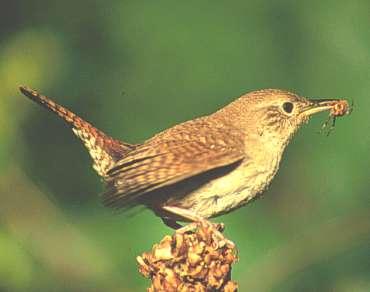Birds:The Wren - The Bird of Christmas

Meanwhile, here we are in the season of the Hunting of the Wren. Bunches of boys would hunt and kill a wren – not something likely to be a long-drawn out process when it was boys, stones and dogs vs. the wren. The dead bird would be tied to the top of a pole or holly bush and garlanded with coloured papers or ribbons.
Then, in straw masks or with faces blackened with burnt cork, the Wran Boys would call from house to house to raise cash for their dance that evening, chanting:
Feathers were plucked and given out as charms for good fortune, then the naked bird was taken off to be buried.
Why the wren? The origin of the custom is obscure, as David Cabot says, "But probably linked to the New Year ceremonies of early Neolithic farmers".
Somewhere along the way the stoning of the bird in the gorse acquired the legend of St Stephen hiding from his enemies in a thicket, and being betrayed by the crosspatch "tik-tik-tik" of a wren. St Stephen was martyred by being stoned to death.
It may be tiny in size, but it is prodigious of voice, singing its heart out the year round. In winter it is solitary by day, but roosts in great numbers at night, and sometimes in nests especially winter-built for communal roosting.
A nesting-box was once found to hold over 60, three layers deep, heads to the middle, rumps to the rear.
There are over 3 million wrens in Ireland, and in winter they might be held to act in comic national archetype, with faction fighting, fisticuffs, and even evictions.
Michael Seago writes: "squabbling is a frequent event at a large roost, and a party of tiny pugilists will 'explode' from the site then tumble in a bunch trying to evict one another".
The Latin name for the wren comes from its habit of making a cave-like domed nest: troglodytes. And therein lies our connection; it was the Troggs who sang "Wild thing, you make my heart sing.".
Little did they know ...
Andy Barclay
